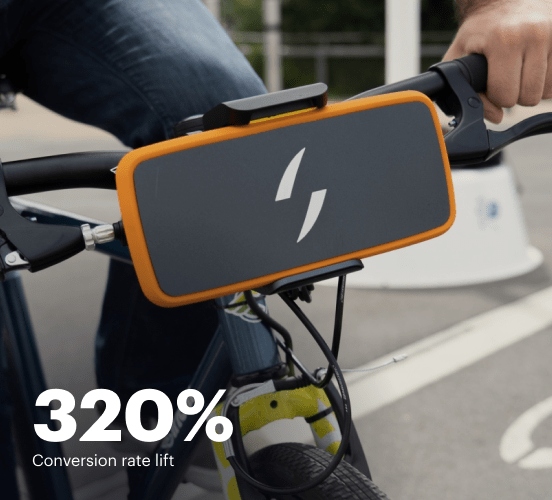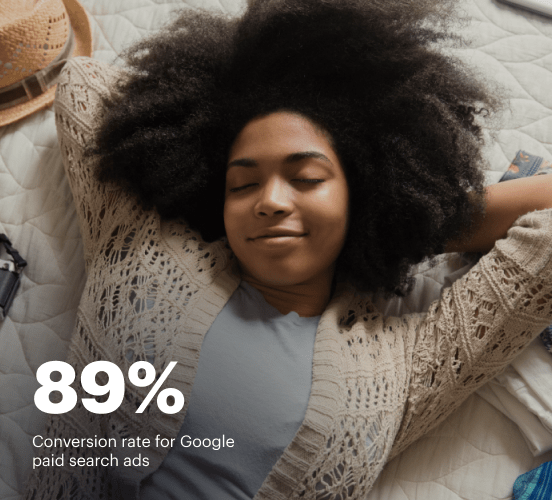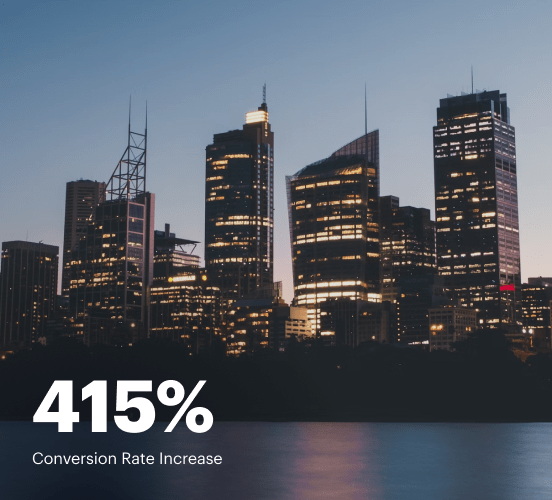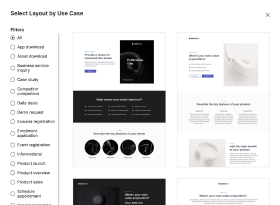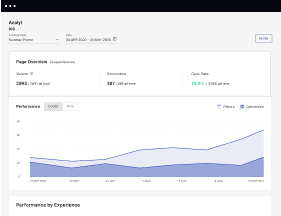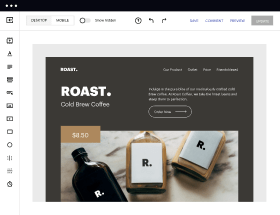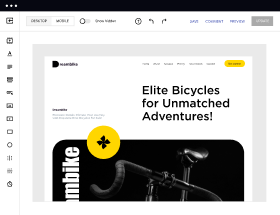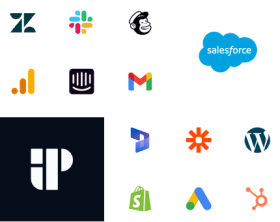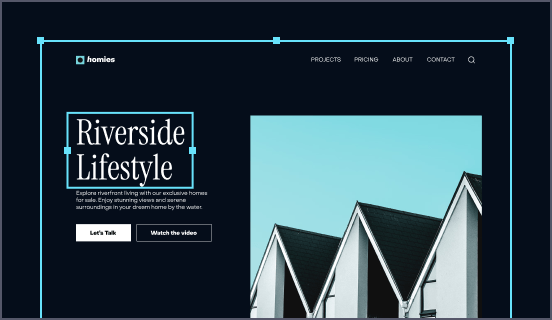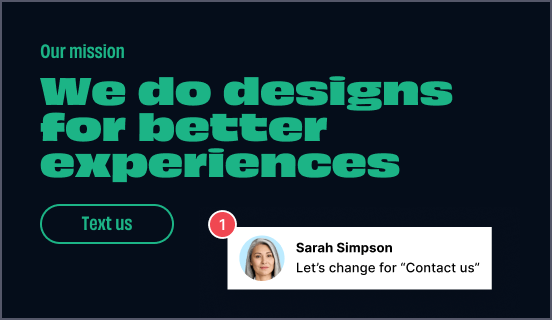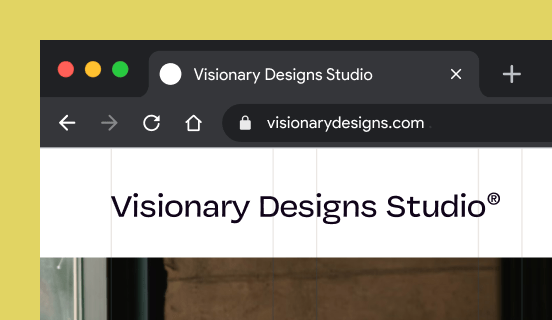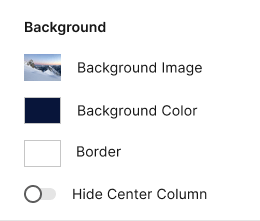Canva vs. Paperform: the best platform for a seamless web experience
Discover how Canva compares to Paperform regarding features and usability. Find out which platform provides the competitive advantage your business deserves.
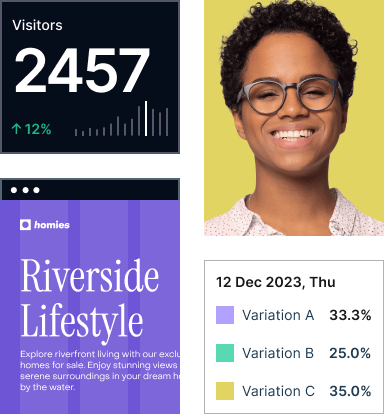
See how Instapage stacks up against the competition
| Feature | Instapage | Other builders |
| A/B Testing | ||
| Drag-and-Drop Tools | ||
| No Coding | ||
| AI Content | ||
| AdMap® | ||
| Instablocks | ||
| Real-time collaboration | ||
| Domains | Unlimited | Limited |
Easier page building without coding
Instapage offers a flexible and seamless page creation experience with a library of 500+ conversion-focused layouts, Instablocks®, a drag-and-drop builder, and AI content generation. With technologies like AMP and the Thor Render Engine®, you can create on-brand, mobile-responsive landing pages that load quickly and start converting during initial visitor clicks.
More insights — better results
Instapage lets you see in detail how each landing page experience and variation is performing so you can make targeted changes that boost page conversions. Use heatmaps for a better understanding of on-page activities, run A/B tests and AI-assisted experiments, and then track and evaluate results within robust analytics dashboards.
More personalized experiences
Instapage lets you quickly create high-performing landing pages tailored to each of your ad campaigns. Deliver personalized experiences for distinct audiences using dynamic text replacement. Effortlessly align specific advertisements to unique pages with AdMaps. Monitor audience-level metrics using our advanced data tools.
Built-in collaboration
Instapage collaboration capabilities bring your entire team together to speed up the process of landing page review, approval, and launch. No more frustrating and unnecessary revisions or edits scattered across emails. Provide instant feedback, conduct real-time page edits, and securely share your pages with outside stakeholders.
All your favorite apps working together with Instapage
With 120+ integrations, Instapage easily connects with your favorite advertising, CRM, email, e-commerce, marketing, and sales solutions.
Explore all integrations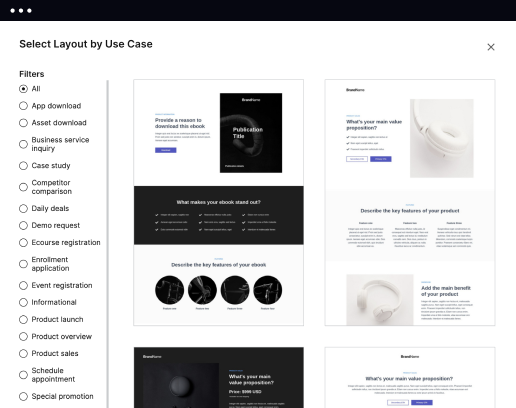
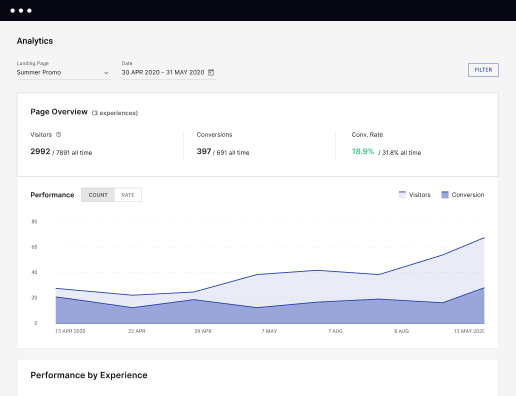
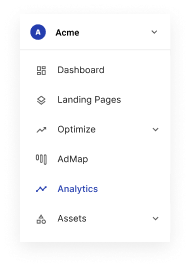
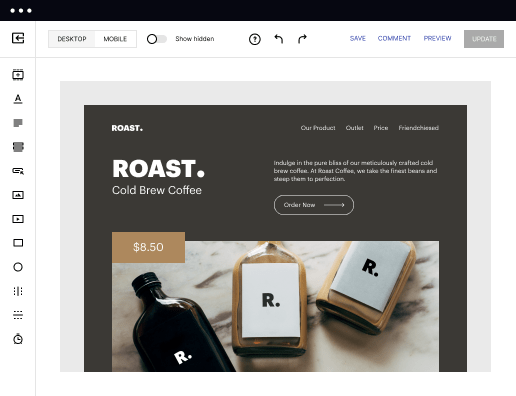
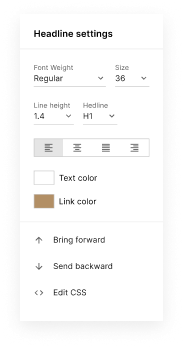
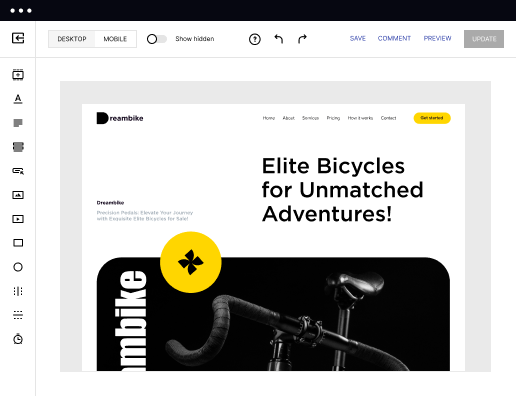
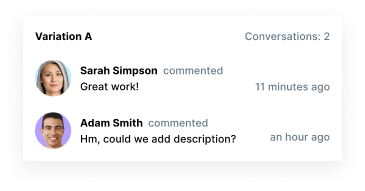
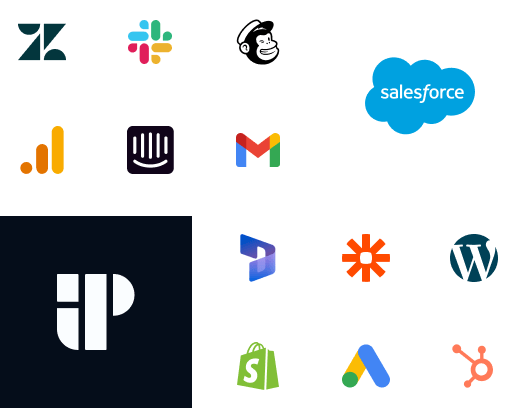
Easier page building without coding
Instapage offers a flexible and seamless page creation experience with a library of 500+ conversion-focused layouts, Instablocks®, a drag-and-drop builder, and AI content generation. With technologies like AMP and the Thor Render Engine®, you can create on-brand, mobile-responsive landing pages that load quickly and start converting during initial visitor clicks.
More insights — better results
Instapage lets you see in detail how each landing page experience and variation is performing so you can make targeted changes that boost page conversions. Use heatmaps for a better understanding of on-page activities, run A/B tests and AI-assisted experiments, and then track and evaluate results within robust analytics dashboards.
More personalized experiences
Instapage lets you quickly create high-performing landing pages tailored to each of your ad campaigns. Deliver personalized experiences for distinct audiences using dynamic text replacement. Effortlessly align specific advertisements to unique pages with AdMaps. Monitor audience-level metrics using our advanced data tools.
Built-in collaboration
Instapage collaboration capabilities bring your entire team together to speed up the process of landing page review, approval, and launch. No more frustrating and unnecessary revisions or edits scattered across emails. Provide instant feedback, conduct real-time page edits, and securely share your pages with outside stakeholders.
All your favorite apps working together with Instapage
With 120+ integrations, Instapage easily connects with your favorite advertising, CRM, email, e-commerce, marketing, and sales solutions.
Explore all integrationsLeading the way in building high-performing landing pages
Get started with Instapage in a few steps
Create your Instapage account
Start with Instapage by signing up via Google or your email. You'll get access to a free 14-day trial to discover Instapage capabilities. Feel free to cancel anytime during the 14-day trial if you decide that our product is not suitable for your business.
Build and personalize your page
Create your first landing page from scratch or choose a template from 500+ customizable layouts. Use the drag-and-drop builder to add page elements, fonts, and backgrounds, refine content with AI, or add custom HTML, Javascript, and CSS.
Review and make edits
Collaborate on page designs and streamline review processes. Invite your team members and stakeholders to review, edit, and provide feedback on your landing page. Collaborate knowing your page is confidential and only accessible to authorized users.
Publish and track page performance
Publish your page to a domain or custom URL. Connect your pages to the ads you've created and track page performance within the analytics dashboard, run A/B tests and AI experiments, analyze results, and continuously optimize your landing page to maintain high conversions.
Canva vs. Paperform: A Clash of Titans with an Unexpected Challenger
In the digital marketing arena, the variety of tools available can be overwhelming. Among them, Canva and Paperform stand out for their unique offerings, each bringing a distinctive flavor to the world of design and form building. Canva, known for its stunning visuals and intuitive interface, allows users to create eye-catching graphics, while Paperform excels in transforming data collection into an art form with beautifully customizable online forms. Yet, just as the main event seems set, Instapage sneaks into the spotlight, ready to showcase its landing page prowess. So, how do these platforms stack up against one another in this crowded field? Let's dive into their features, usability, and more to find out who takes the crown.
Introducing the Champions
In one corner, we have Canva, the design powerhouse that has democratized creativity for millions. With a plethora of templates and an easy drag-and-drop interface, Canva empowers users from all walks of life to create professional-quality designs with ease. Its image editing tools are nothing short of exquisite, allowing marketers to transform ordinary visuals into showstoppers. On the other hand, there's Paperform, the unsung hero of online forms. With its wizard-like functionality and elegant templates, Paperform enables users to craft complex forms that don’t just collect data but also enchant visitors with their interface. And let’s not forget about Instapage, quietly making waves as the go-to platform for optimizing landing pages. Designed with marketers in mind, it helps users create high-converting pages that effortlessly guide visitors toward action. Now, let's see how these platforms perform under the spotlight.
Feature Showdown: Who Brings the Best Tools?
When it comes to features, Canva and Paperform come out swinging. Canva’s extensive library of design elements — think vectors, stock images, and fonts — lets users play around to their heart's content. It’s like having a design studio in your pocket. Meanwhile, Paperform counters with its remarkable ability to unleash form creativity. From simple surveys to complex questionnaires, it offers formatting and customization that make data collection a breeze. But just when you think it's a one-on-one match, Instapage steps into the ring, offering features specifically tailored for marketing performance, such as A/B testing and integrations that can turn simple pages into conversion machines. It’s a thrilling contest with no clear winner just yet!
Usability: User Experience Takes Center Stage
Every user deserves a smooth ride, whether they're novice marketers or seasoned pros. Canva impresses with an interface that feels intuitive and inviting, making it easy for novice users to get started without a steep learning curve. However, it also boasts advanced features that cater to experienced designers seeking sophistication in their projects. Paperform shares this philosophy, easing new users into the world of form creation while providing powerful customization options for those who want to take their forms further. But, let's be honest — everyone remembers the horror stories of tech struggles. Thankfully, both platforms ensure your learning adventure is more like a guided tour rather than a harrowing expedition.
Eye-Catching Features of Canva:
- Extensive template library for various design needs
- User-friendly drag-and-drop interface
- Image editing tools for creating stunning visuals
- Collaboration features for team projects
- Export options in multiple formats, including PDFs and images
Standout Features of Paperform:
- Customizable form templates to fit any brand
- Rich media support, including images and videos within forms
- Easy integrations with payment platforms
- Conditional logic to create dynamic forms
Common Strengths Shared by Both Platforms:
- User-friendly interfaces that appeal to beginners
- Extensive help resources and tutorials available
- Customization options that allow branding consistency
- Mobile responsiveness for designs and forms
- Cloud-based access for flexibility and convenience
- Support for various integrations with other services
As we cheer for both Canva and Paperform in this match, it’s clear they are both formidable contenders. However, Instapage quietly lingers in the background, crafting a case for itself as the ultimate team player in marketing performance and landing page optimization.
Performance Duel: Who’s Faster on the Draw?
In today's fast-paced digital landscape, slow-loading pages can be the kiss of death for user engagement. Here, we compare loading times and mobile responsiveness. Canva ensures its designs render quickly, allowing users to share their creativity without delay. Paperform follows suit with forms that load seamlessly across devices, making data entry as smooth as butter. But who could forget the metaphor of pages loading like molasses in winter? Nobody wants to wait around for a page to load when time is of the essence! With both Canva and Paperform prioritizing performance, users can rely on their pages to deliver efficiently to visitors.
Support Squad Showdown: Who’s Got Your Back?
When tech troubles arise, a reliable support system is essential. Canva shines with a comprehensive help center filled with guides, tutorials, and an active community forum where users can exchange tips and tricks. Paperform offers email support and live chat—on some plans—ready to assist users in real time. Picture the support team as your trusty sidekick, equipped to tackle any challenge that may come your way. While both platforms take customer support seriously, Instapage claims its stake with a rich selection of resources that can turn first-time users into savvy marketers.
The Pricing Palooza: Value for Your Buck
Advantages of Canva's Pricing Strategy:
- Free plan with essential features for new users
- Affordable subscriptions for premium features
- Flexibility to scale up or down depending on usage needs
- No hidden fees, making budgeting straightforward
Advantages of Paperform's Pricing Strategy:
- Offers a free trial to explore features before commitment
- Transparent pricing with clear tier differentiation
- Unlocks advanced features at reasonable prices
- Flexible billing plans cater to various user needs
Navigating the pricing strategies of Canva and Paperform is akin to exploring a treasure trove of possibilities. Both platforms boast affordability and flexibility, but when we place Instapage into the mix, its pricing strategy shines even more. Instapage provides robust utility that delivers exceptional value, catering to professionals seeking serious marketing solutions.
As we explore the pricing plans of these contenders, it becomes clear: you often get what you pay for. Sometimes, however, there are unexpected gems hidden within the pricing tiers that might catch you by surprise — and we’re not just talking about software!
And Here Comes Instapage...
In this battle of the platforms, Instapage emerges as a seasoned ally who understands the ins and outs of effective marketing. While Canva dazzles with design and Paperform excels in form functionality, Instapage carves out its own niche by optimizing landing pages for conversions and performance tracking. Its intuitive interface and unique features, such as A/B testing for landing pages, provide marketers with the tools they need to truly connect with their audiences. This powerful platform may just be the secret weapon you never knew you needed for your business strategy. Competition is fierce, but the choice ultimately lies in how well each tool aligns with your goals.
In closing, choosing between Canva, Paperform, and Instapage may not be a simple decision. The right platform could define your marketing success. Take the time to reflect on your personal or business goals, and let that guide your choice. By exploring the unique offerings of each platform, you equip yourself with the confidence to soar to new marketing heights. So why not take a closer look at Instapage as your next step in this thrilling journey?
FAQs
Try the most advanced landing page platform today
Get started

